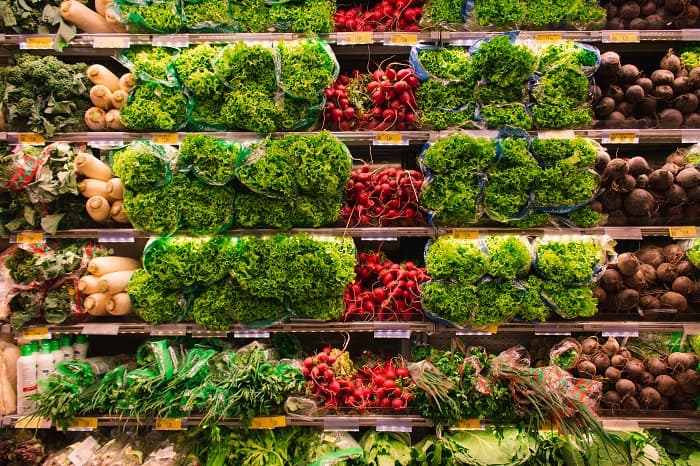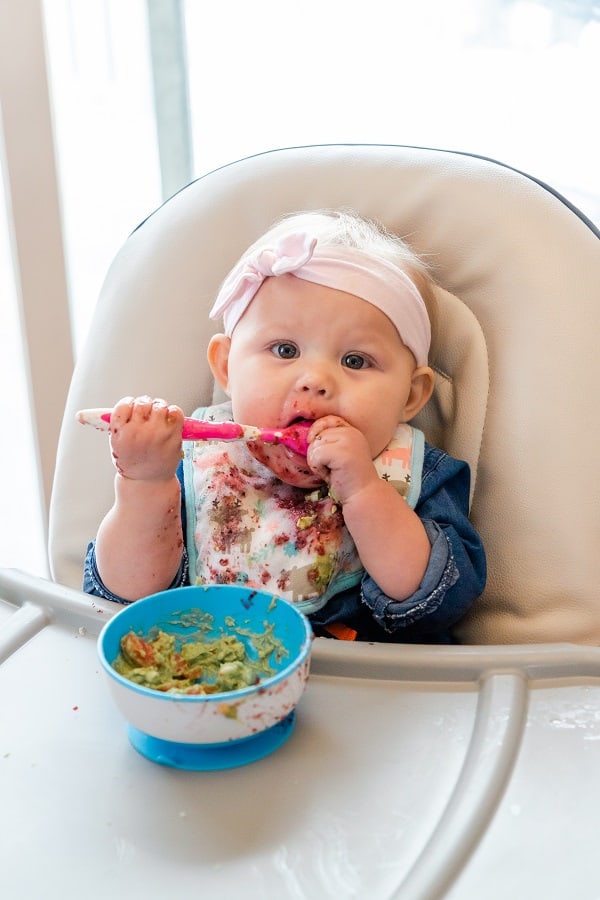An estimated 1% of the population suffers from celiac disease. As one of those individuals, I decided to take a conservative approach with my infant’s diet. Celiac is a hereditary illness. Therefore, if your family does not carry the qualifying genes (HLA-DQA1 or HLA-DQB1) there is likely no urgent reason to place your infant on a gluten-free diet.
Your child has a 10% chance of developing celiac disease if someone in the immediate family has the illness. When gluten is kept out of the child’s diet their immune system cannot be triggered by the gluten proteins that may pass through the immature intestinal tract. Therefore, when keeping the trigger, gluten, out of the diet there is no opportunity to acquire the illness.
The following topics will be covered in this article:
- Major considerations for becoming a gluten-free family
- Maintaining a protective environment
- Gluten-sensitivity
- Initial signs and symptoms of infant celiac disease
- Gluten is not an essential part of the human diet
- Gluten-free foods our baby continues to thrive on
- 3-Day gluten-free meal plan for your infant age 6 months+
- Keeping gluten-free simple with natural foods
- Helpful gluten-free grocery shopping strategies
Major considerations for becoming a gluten-free family

Our family has decided to refrain from introducing gluten into our 10-month old’s diet until she has more time to develop. According to Dr. Joel Fuhrman, it takes about two years for a baby’s intestinal lining to fully seal together.
Therefore, it makes the most sense for Ionna, my daughter, to eat other grain substitutes until this two-year time frame has passed. This will provide her with the greatest degree of protection from acquiring the illness during her most vulnerable years.
Maintaining a protective environment
Going gluten-free is a big decision that is going to take a lot of effort on the parents’ part to ensure well-meaning friends, family, and day-care providers do not slip gluten into your child’s diet. You may even receive criticisms and questions fueled by skepticism from those who may know little on the topic.
Continue to educate yourself on the risks and benefits involved with your child’s dietary decisions. Your confidence will grow with the more knowledge you obtain.
Make your boundaries known to those who will be interacting with your child most. For instance, I provided Ionna’s daycare staff with a list of foods that are acceptable and those that are not. I continue to update the list as my baby develops and reaches new stages in her abilities.
Gluten-sensitivity
It is important to note that since 2011, researchers determined that 10% of the population is affected by nonceliac gluten-sensitivity. People with gluten-sensitivity tend to suffer similar symptoms as celiac patients such as:
- abdominal pain/cramping/bloating
- diarrhea
- constipation
- depression
- brain fog
- ADHD-like behavior
- autism
- iron-deficiency anemia
- fatigue/weakness
- joint pain
- muscle disturbances
- osteoporosis
- leg numbness
- migraines
- sinus problems
Although symptoms of gluten-sensitivity may be less severe than those with full-blown celiac, there does seem to be an underlying immune response with significant health implications. – Brenda Davis RD
Initial signs and symptoms of infant celiac disease
If your baby does develop coeliac disease, you’re likely to notice the symptoms when he’s between nine months old and 18 months old. Your baby may seem unsettled and irritable, and he may have:
- diarrhea
- weight loss or poor weight gain
- little appetite
- a bloated tummy
Talk to your doctor if you notice your infant exhibiting any of these symptoms, particularly if you have a family history of gluten intolerance or sensitivity.
If you still suspect a gluten sensitivity after your doctor performs the necessary assessments feel free to try a modified elimination diet. Simply remove all glutinous containing items from your child’s diet for a few months and see if you notice any changes in their symptoms.
A major perk about removing these foods is that most gluten-containing items are overly processed convenience foods. Some examples are cakes, cookies, bagels, candy bars, doughnuts, sugary cereals, breakfast bars, brownies, bread, and cupcakes. By removing these from your child’s diet, (or your own diet) you instantly improve your nutrition, and ultimately your health.
Gluten is not an essential part of the human diet
Technically, grains, in general, are not an essential part of the human diet. Gluten does not contain a specific set of nutrients that we are unable to obtain from other healthy plant sources. – Dr. Alan Goldhamer
For instance, you can obtain similar amounts of fiber, nutrients, and phytochemicals from starchy vegetables like corn, squash, beans, and carrots.
Gluten-free foods our baby continues to thrive on

Gluten-containing grains, wheat, spelt, Kamut, triticale, rye, and barley do contain a number of important nutrients. There are other grains and pseudograins, however, that you can offer your baby instead that provide just as much nutrition.
Some of these options include:
- Teff
- Amaranth
- Spirulina
- Quinoa
- Buckwheat
- Wild rice
- Oats
- Sorghum
- Millet
There are also plenty of non-grain naturally gluten-free plant-based foods to serve your baby, such as:
- Vegetables
- Fruits
- Seeds
- Nuts
- Legumes
Below I have provided a sample 3-day meal plan for anyone interested in getting started with some healthy plant-based gluten-free meal ideas for your baby:
3-Day Gluten-free Meal Plan for Baby 6 months+
| Meal | Day 1 | Day 2 | Day 3 |
| Breakfast | GF Oatmeal, fresh fruit | Fruit smoothie | Green smoothie |
| Lunch | Beans & rice with steamed veggies | Sweet potato & fresh greens with salsa | Rice & Lentils with broccoli |
| Dinner | Squash with beans & veggies | Vegetable soup | Vegetable & bean stir fry |
| Snacks | Veggies & hummus | Raw veggies | Fresh fruit |
These meals are adjusted for a baby-led weaning (BLW) approach where you offer foods in their most natural form to your baby, as opposed to blends, purees, or other conventional “baby food” mixtures. You may blend the above meals if you prefer to go the conventional route.
For more information on how to prepare, cook, and safely serve these items to your 6 month+ child click here to view my post titled Top 15 Plant-based Gluten-free Baby-led Weaning Foods.
Keeping gluten-free simple with natural foods

When people transition to a gluten-free diet they have a tendency to substitute all the glutinous food items they were consuming with processed gluten-free versions. Instead of regular pizza, bread, and cookies, they opt for gluten-free pizza, bread, and cookies. This is both needlessly expensive and non-beneficial to your health.
All your baby’s taste preferences are acquired. They do not yet have preferences for gluten-free junk food straight off the bottle, so there is no reason to feel obligated to offer these nutrient-depleted foods to your baby.
An approach that I found helpful was to simply stick with naturally gluten-free foods such as legumes, non-glutinous containing grains, fruit, veggies, nuts, and seeds. For more information on the benefits and how-tos of feeding your infant a whole-foods plant-based diet click here to visit my post titled A Full Guide to Safely Raising a Plant-based or Vegan Baby.
Helpful gluten-free grocery shopping strategies
Start focusing on the produce section and the buy-in-bulk aisle of your grocery store. You will find 95% of your food items here for complete plant-based gluten-free nutrition for the whole family.
You can fill your cart with loads of greens, squashes, potatoes, veggies, and fresh fruit in the produce section. Then stop in the bulk aisle for longer kept pantry items such as, rice, beans, seeds, oats, quinoa, dried fruit, and nut varieties. I also like to keep some canned beans and frozen veggies and fruit on hand.
The other members of your family may not be gluten-free, so you may be offering gluten-containing foods to them if that is your preference. I have a particularly sensitive case of celiac disease, so I prefer to only bring gluten-free items into my home.
Accidental gluten ingestion may occur when your partner or other family members continue to contaminate the kitchen area with their gluten-containing foods. Since your baby does not likely have a gluten-intolerance there is no need to worry about their well-being in this sense. They will likely survive minimal instances of accidental ingestion here and there.
It is the repeated exposure that tends to bring about gluten intolerance and sensitivity. Talk with your family members about your concerns. Perhaps you may offer to make the bulk of the meals. People tend to be more accommodating when you are willing to put in the extra effort.

Highlights on raising a gluten-free baby
- If your baby has an immediate family member with celiac disease she or he has a 10% likelihood of acquiring that disease. By refraining from gluten, your child’s immune system will never have the opportunity to develop an inflammatory response to the proteins found in foods containing gluten.
- If you have any family history of gluten intolerance or sensitivity it may be beneficial to keep glutinous foods out of your child’s diet for at least the first two years of life. Following two years, your child’s intestinal tract will be mature enough to keep the glutinous proteins from slipping through the intestinal lining, ultimately triggering an autoimmune response.
- Upon making the decision to raise a gluten-free baby, it is important to inform family and childcare workers of your child’s special needs.
- Gluten-sensitivity affects 10% of the population and can imitate symptoms similar to full-blown celiac.
- Symptoms of infant celiac disease may result in a bloated or distended tummy, diarrhea, weight loss, and poor appetite.
- There is a wide variety of non-gluten containing grains, as well as other plant-based foods such as legumes, nuts, seeds, fruits, and vegetables that will provide all the nutrition your baby requires.
- Gluten is not an essential part of the human diet.
- Leading a gluten-free (gf) lifestyle is easy when you stick to whole naturally gf foods, as opposed to substituting with processed gf convenience foods.
- An easy strategy to use in following a gf diet is to focus on the produce section and bulk-item or dry-goods area of your local grocery store.
- Speak with your pediatrician before making any changes to your child’s diet.
Karli Jackson

